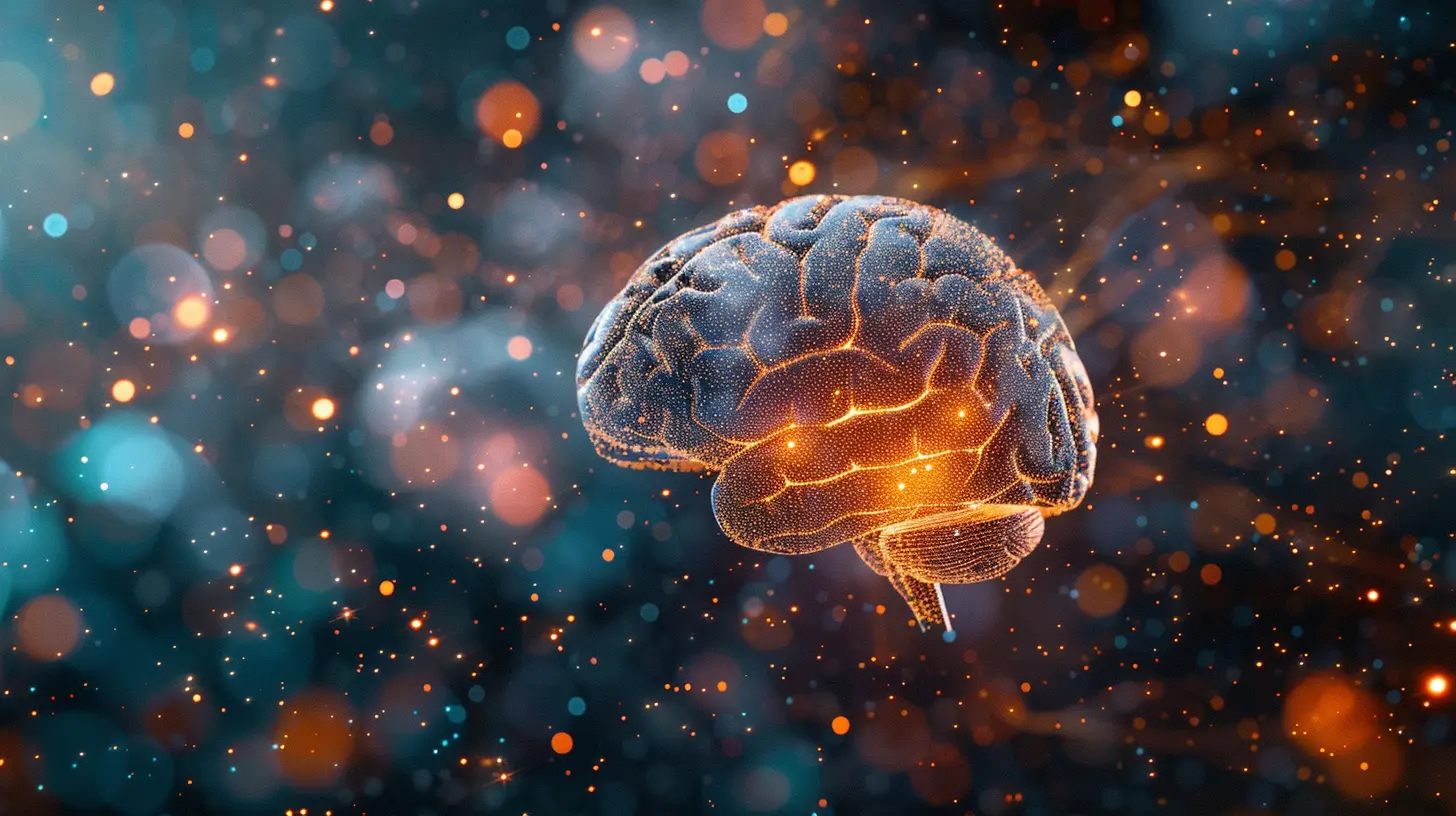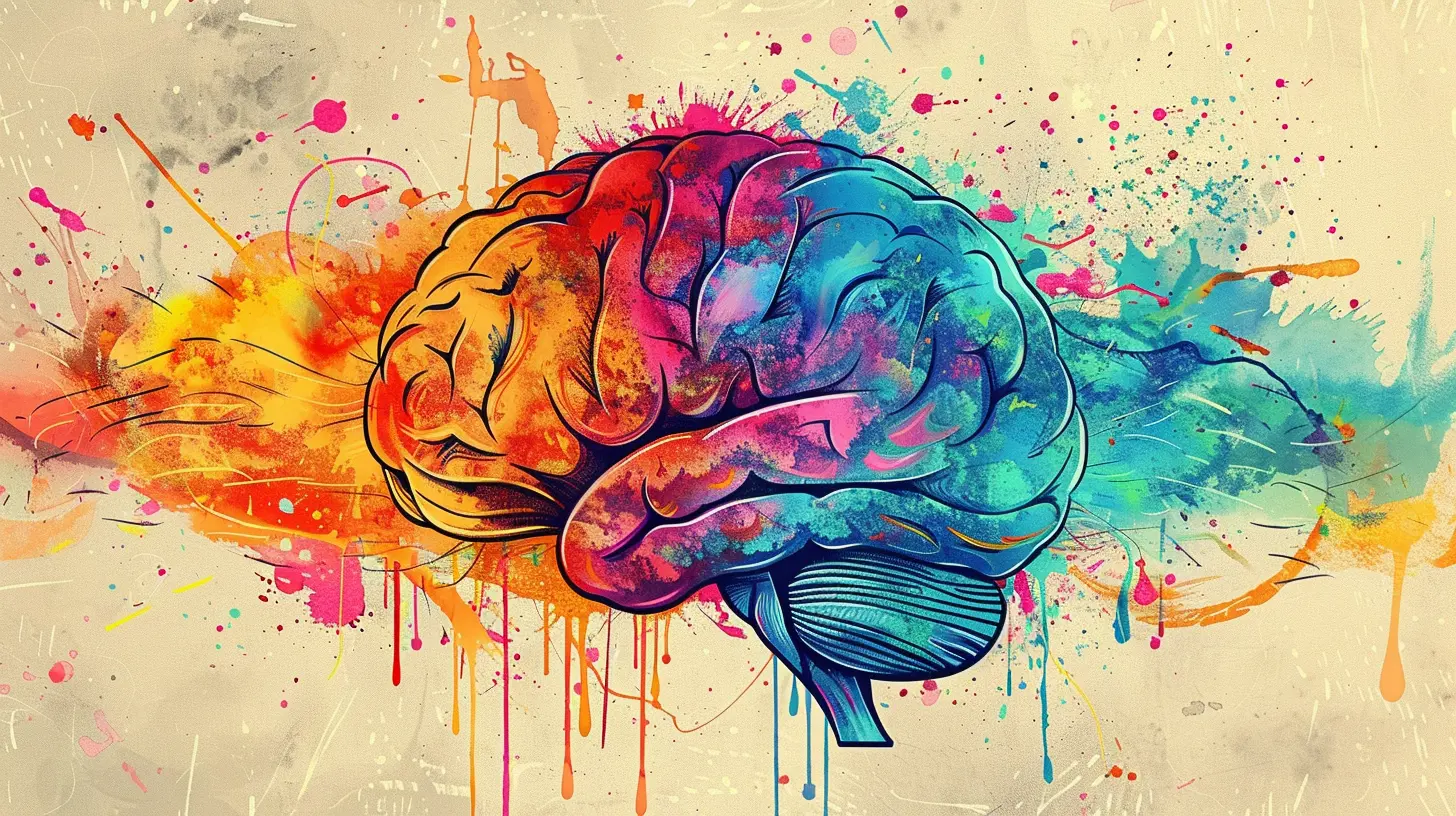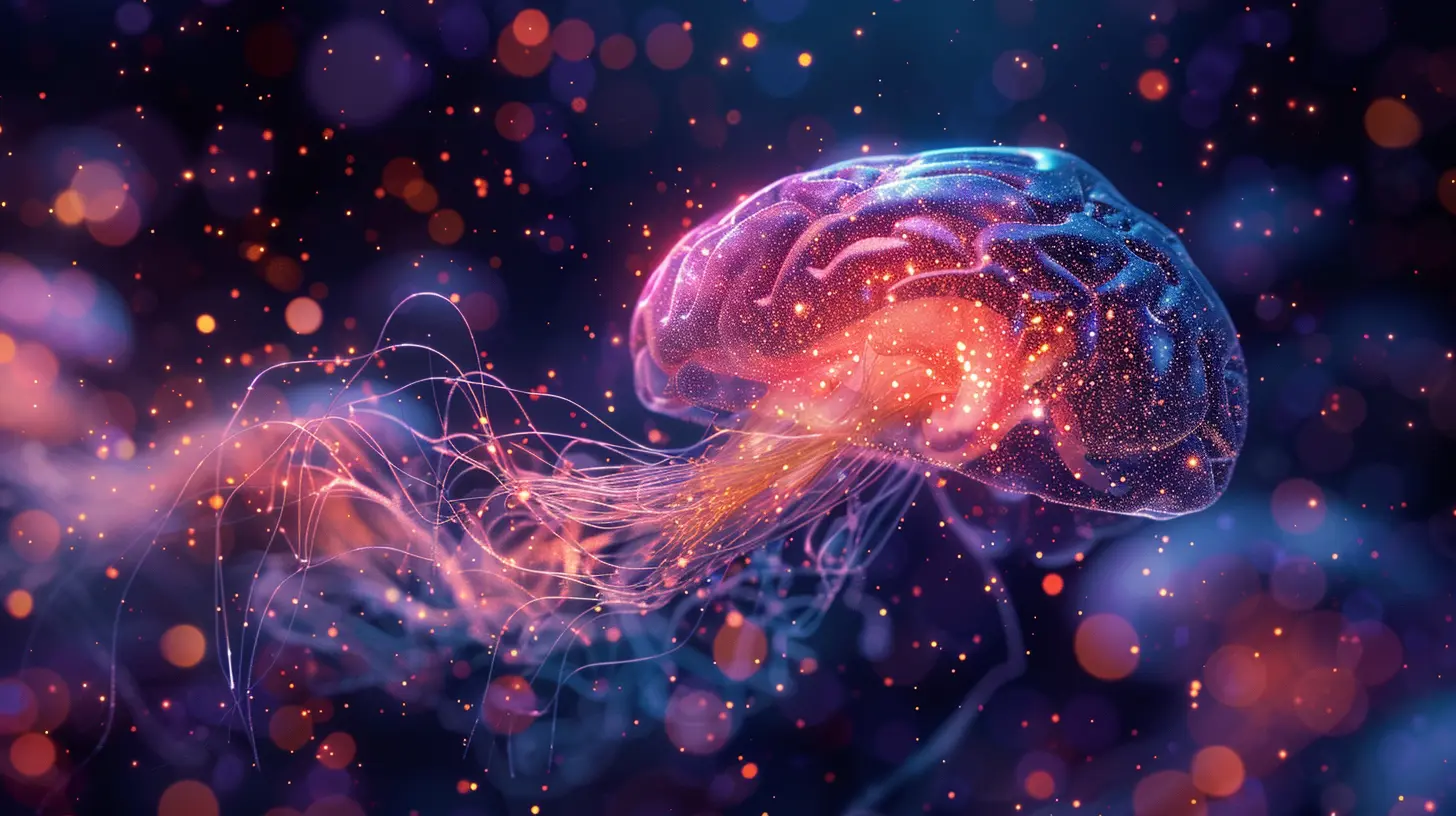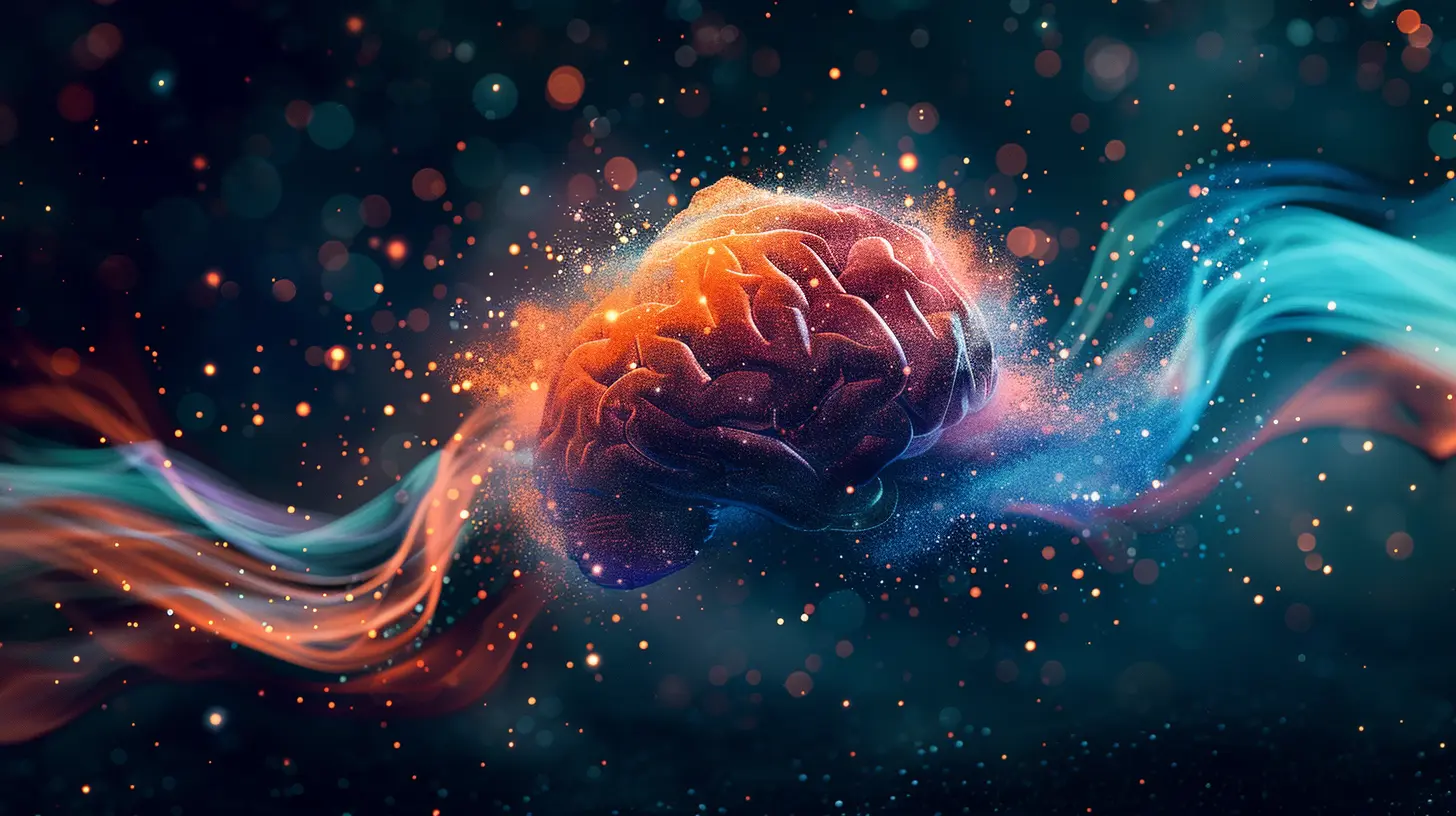The Neuroscience of Happiness: What Happens in Your Brain When You're Happy
23 April 2025
Have you ever wondered what’s actually happening inside your brain when you feel happy? Is there some sort of "happiness switch" we can flip? Or is it a complex orchestra of chemicals and neural activity? Well, you’re not alone in asking these questions. Happiness has been a topic of curiosity for centuries, and modern neuroscience is finally beginning to unravel some of the mysteries behind it.
In this article, we’ll take a deep dive into the fascinating world of brain chemistry and neural pathways that contribute to your feelings of joy. We’ll explore how different neurotransmitters work together, how certain brain regions light up when you're feeling good, and what you can do to boost your happiness levels naturally. Buckle up, because we're about to get into the nitty-gritty of the neuroscience of happiness!

What is Happiness Anyway?
Before we get into the science, let’s start with the basics. How do we define happiness? Happiness is a broad concept. For some, it’s a fleeting emotion that comes and goes, while for others, it’s a long-term state of mind. In psychological terms, happiness is often broken down into two components:1. Hedonia – This is the type of happiness that comes from pleasure, like eating your favorite meal or hearing your favorite song. It's short-lived but feels great in the moment.
2. Eudaimonia – This refers to a deeper, more meaningful sense of happiness. It’s the kind of joy you get from living a life aligned with your values, contributing to society, or pursuing personal growth.
Both kinds of happiness have their place in our lives, and both can be explained (at least partially) by what’s happening in your brain.
Now, let’s get into the science of it all!

The Brain Chemicals Behind Your Happiness
You’ve probably heard the term "brain chemicals" thrown around when people talk about emotions. But which chemicals are we talking about, and how do they affect your happiness? Let’s break it down.1. Dopamine: The "Feel-Good" Chemical
Dopamine is one of the most famous neurotransmitters associated with happiness. It’s often called the "feel-good" chemical because it’s responsible for the rewarding feelings you get after accomplishing something. Think of dopamine as your brain’s way of saying, "Good job!" when you complete a task, score a goal, or receive praise.- How dopamine affects happiness: When you achieve something, whether it's big or small, your brain releases dopamine, giving you a rush of pleasure. This chemical plays a key role in motivation, encouraging you to keep doing things that make you happy.
- The reward pathway: Dopamine is linked to the brain's reward system, particularly in areas like the nucleus accumbens and the ventral tegmental area (VTA). These regions light up when you're about to experience something enjoyable, like eating a delicious meal or even anticipating a reward.
But dopamine isn't all sunshine and rainbows. It can also be problematic when you rely too much on quick dopamine hits—think social media likes or junk food. Your brain can become desensitized to it, leading you to crave more and more for the same feeling.
2. Serotonin: The Mood Stabilizer
If dopamine is the go-getter of the brain, serotonin is the peacekeeper. This neurotransmitter plays a major role in regulating mood, sleep, and even digestion. Low levels of serotonin are often linked to mood disorders like depression.- How serotonin impacts happiness: When you have enough serotonin circulating in your brain, you feel calm, balanced, and content. It’s the chemical that helps you feel a sense of well-being, not just fleeting joy.
- Where serotonin works: Serotonin is produced in the raphe nuclei of the brainstem and then spreads to other regions of the brain, including areas involved in mood regulation, such as the amygdala and prefrontal cortex.
Interestingly, many antidepressant medications (like SSRIs) work by increasing serotonin levels in the brain, helping people feel more stable and less anxious.
3. Oxytocin: The "Love Hormone"
Oxytocin is often called the "love hormone" or "cuddle chemical" because it’s released during social bonding, hugging, and even childbirth. This hormone strengthens relationships and encourages feelings of trust and affection.- How oxytocin relates to happiness: When you’re connecting with others—whether through a meaningful conversation, a hug, or even petting your dog—oxytocin levels rise, helping you feel emotionally close and secure.
- The social aspect: Oxytocin is linked to the hypothalamus, which regulates many basic bodily functions. But its release is also triggered by social interactions, making it essential for maintaining healthy relationships and emotional well-being.
4. Endorphins: The Painkillers
Ever heard of the "runner’s high"? That’s endorphins at work. These chemicals are your body’s natural painkillers and are released during physical activity, laughter, and even when you eat spicy foods.- Endorphins and happiness: Endorphins reduce pain and trigger positive feelings. This is why exercise can be such a great mood booster—it not only improves your physical health but also makes you feel happier.
- Evolutionary purpose: Endorphins likely evolved to help humans push through physically demanding situations. They dull pain and help you keep going, which can lead to feelings of euphoria, especially after intense exercise.

Key Brain Structures Involved in Happiness
Now that we’ve covered the brain chemicals involved in happiness, let’s look at the regions of the brain responsible for processing these emotions.1. The Prefrontal Cortex: The Decision Maker
The prefrontal cortex is the brain’s executive center, responsible for decision-making, planning, and moderating social behavior. This area of the brain is also heavily involved in your experience of happiness.- How it works: When you reflect on positive memories or anticipate future rewards, the prefrontal cortex becomes active. It helps you weigh your options and decide what actions will bring you the most joy.
- Long-term happiness: This part of your brain is particularly important for eudaimonic happiness. It’s what helps you engage in activities that are meaningful and fulfilling over the long term, like pursuing goals or building relationships.
2. The Amygdala: The Emotional Center
The amygdala is often associated with fear and negative emotions, but it plays a role in processing positive emotions too. This almond-shaped structure is your brain’s emotional center.- How the amygdala contributes to happiness: The amygdala helps you process emotional stimuli, whether positive or negative. When it comes to happiness, the amygdala is involved in recognizing joyful experiences and attaching emotional significance to them.
- Balance: Interestingly, a well-regulated amygdala is key to emotional balance. If it’s overactive, you might experience more anxiety or stress, which can dampen your overall sense of well-being.
3. The Nucleus Accumbens: The Pleasure Center
The nucleus accumbens is part of your brain’s reward circuit. It lights up when you experience pleasure, whether that’s from eating a delicious food, receiving a compliment, or achieving a goal.- How it works: This area is flooded with dopamine when you experience something pleasurable. It’s crucial for the feelings of reward and motivation that drive you to pursue enjoyable activities.
- Short-term vs. long-term: While the nucleus accumbens is essential for short-term bursts of happiness (like enjoying your favorite dessert), it’s not as involved in the sustained sense of happiness that comes from meaningful activities.

How Can You Boost Your Brain’s Happiness Chemistry?
Now that you know what’s happening in your brain when you’re happy, the next logical question is: How can you encourage your brain to produce more of these happiness-inducing chemicals?1. Exercise Regularly
Exercise is a well-known mood booster. Not only does it release endorphins, but it also increases dopamine and serotonin levels, making you feel more balanced and joyful.2. Practice Gratitude
Focusing on what you’re grateful for helps increase serotonin production in your brain. Next time you’re feeling down, try listing a few things you’re thankful for. It might sound simple, but it can have a powerful effect on your mood.3. Connect with Others
Human beings are social creatures. Interacting with others, whether through a hug, a deep conversation, or even spending time with a pet, boosts oxytocin levels, helping you feel more connected and happy.4. Set Goals and Achieve Them
Dopamine loves accomplishments, no matter how small. Setting and achieving goals—whether it’s learning a new skill or simply ticking tasks off your to-do list—helps your brain release dopamine, giving you that sense of satisfaction and joy.5. Get Enough Sleep
Sleep is crucial for regulating mood and maintaining a healthy balance of neurotransmitters. Without adequate sleep, your serotonin and dopamine levels can dip, leaving you feeling irritable or low.Final Thoughts
Happiness is more than just a fleeting emotion—it’s a complex interplay of brain chemicals, neural pathways, and personal experiences. While some of it is out of our control (like genetic predispositions), there’s a lot we can do to influence our brain chemistry and boost our overall sense of well-being.Understanding the neuroscience behind happiness gives you the tools to better navigate your emotions and make lifestyle changes that can enhance your mood. So, next time you find yourself smiling at a funny joke or feeling joy from a hug, remember: your brain is hard at work making that happiness possible!
all images in this post were generated using AI tools
Category:
Psychology Of HappinessAuthor:

Alexandra Butler
Discussion
rate this article
4 comments
Grey McFarlin
Absolutely fascinating! Understanding happiness enhances our lives—let’s celebrate every joyful moment!
May 16, 2025 at 2:43 AM

Alexandra Butler
Thank you! Celebrating joyful moments is indeed vital for our well-being and understanding the science behind happiness can deepen that appreciation.
Kael Flores
Happiness rewires our brains for resilience.
May 4, 2025 at 4:44 AM

Alexandra Butler
Thank you for your insightful comment! Indeed, happiness can enhance neural pathways and promote resilience, showcasing the profound connection between our emotions and brain function.
Elidi Maddox
Happiness: brain's way of throwing a confetti party!
April 29, 2025 at 4:11 AM

Alexandra Butler
Absolutely! Happiness sparks a vibrant celebration in our brains, releasing feel-good chemicals that light up our mood. 🎉
Diana Romero
Great insights on the neuroscience behind happiness! Understanding how our brains engage with joy not only enhances our well-being but also empowers us to cultivate happiness intentionally. Keep spreading this important knowledge!
April 25, 2025 at 4:18 PM

Alexandra Butler
Thank you for your kind words! I'm glad you found the insights valuable and inspiring. Let's continue to explore and share the science of happiness together!



